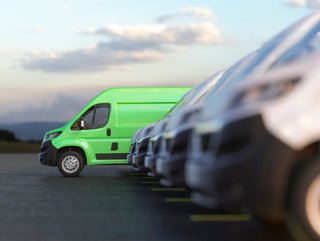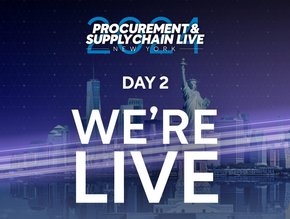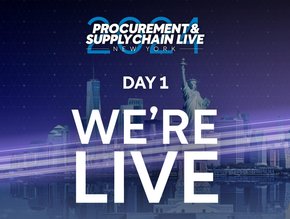Target supply chain tech to cut Scope 3, says AspenTech

Global supply chains are witnessing great shifts in how they do business thanks to the growing need for energy security, transparency, and efficiency. The transition to renewable forms of electricity is something that ripples across industries and requires a major shift in approach to ensure that targets are met and the environment can begin to heal.
For supply chain organisations, this means taking an in-depth look at their assets to understand whether they serve this long-term strategy, have the potential to adapt, or require a new approach altogether.
Ron Beck, the Senior Director for Solutions Marketing at AspenTech, uncovers the crucial elements of decarbonisation that can be found and actioned within the supply chain.
What role does digital supply chain management play in accelerating the clean energy transition?
The momentum for the energy transition continues unabated, even in the face of energy security priorities and governmental policy ambiguity. The energy transition, which in its essence seeks to replace carbon-emitting fossil fuel energy use with low or zero-carbon sourced electricity, is driven by a number of factors, including increasingly ambitious energy and climate policies, technological progress reducing the “green premium” for new energy, and a growing understanding that a broad energy mix contributes to energy security.
Global supply chains are, at the same time, emerging as a crucial element of and a point of friction and constraint on the adoption of new energy sources, while at the same time increasingly crucial in tracing and tracking green energy sources across the value chain. Digital management of the supply chain will be central to monetising carbon avoidance, in facilitating collaboration and partnerships, in enabling and accelerating investments in growth regions, and generally in achieving flexible and “born digital” clean energy supply chains.
Clean energy transition has gained recent momentum—in 2022, wind and solar annual capacity additions grew 25% on the previous year, representing a new record for annual deployment (350 GW combined). In power generation, wind and solar are now cheaper than new fossil fuels in countries representing over 95% of electricity generation, and cheaper than existing fossil fuels in countries representing 60% of electricity generation.
Much needs to be done, however, before this vision is fully realised. In a recent report, the Energy Transitions Committee highlighted “The path to a net-zero global economy will require huge growth in clean energy technology deployment, with rapid scaling required of both clean energy supply and end-use decarbonisation technologies.” Agile supply chains are a key to ensuring that the desired pace of change can continue.
How can supply chains help industries decarbonise?
Supply chains are an integral component of carbon emission avoidance and energy transition. First, it’s crucial to understand the flow of carbon and abatement of emissions across the value chain. Second, it’s important to understand supply chain weak points as a company devises energy transition strategies and plans. Third, it’s important to monetise green supply chains optimally. All of these are enhanced with effective use of digitalisation.
Here are five ways that digital-enabled supply chains support the drive towards net zero for a company:
Making the best supplier and feedstock decisions leading to the best balance of carbon intensity and profit. For instance, in a refining or petrochemical setting, there is usually hydrocarbon feedstock optionality, alternative sales routes for the product slate, as well as product slate choices. The latest generation of digitalisation tools for plant supply chain planning, (such as Aspen Unified Planner) helps the planner optimise not only for margin, but also for carbon intensity. Selecting a lower carbon intensity feedstock (such as light crudes from the Middle East that also have best-in-class energy intensity for production) and a product slate that can be sold to customers willing to pay a premium for lower-carbon products leads to lower carbon emissions while monetising the greening of the manufacturing. Optimising such a plan can only be done with the most advanced planning models and digital optimiser, that are accurate for both economics and carbon. AI (artificial intelligence) also plays a role here, advising the planner of the likelihood of successfully executing a plan, based on predictive analytics employing historical data from previously executed production plans.
Tracking biomaterials through the value chain to end product and issuance of green certificates (such as those legislated in the EU). The same planning tools mentioned above, additionally can form the basis for an optimisation app that will track bio-feedstock correctly calculate renewables content created in the process plant, and optimise the production strategy to maximise monetisation of green certificates to the customers most willing to pay, for instance air operators looking for sustainable aviation fuel credits, or consumer goods manufacturers looking to maximise the renewable content of products (such as athletic shoes).
Optimising transportation costs in the supply chain, that constitute scope three emissions for the producer. Supply chain software is now easy-to-use and powerful enough to build optimisation models across a circuit of production plants and incorporating inbound and outbound transportation. Sourcing decisions and decisions as to which plants should supply which customers will now take into account transportation costs, means of transportation and the resulting carbon emissions incurred; and can optimise these to minimise transport-imposed scope three emissions.
Addressing supply chain bottlenecks in implementing sustainability technologies such as bio-feedstock reactors, green hydrogen, carbon capture, and pyrolysis for converting waste plastics. The engineering industry has identified supply chain challenges that will delay execution of these high-demand new technologies. According to the International Energy Agency’s (IEA) Energy Technology Perspectives Report 2023, “Clean energy technology deployment must accelerate rapidly to meet climate goals. In the Net Zero Emissions by 2050 (NZE) Scenario, global production of electric cars increases six-fold by 2030; renewables account for over 60% of power generation (up from 30% today); and electricity demand increases by 25%, accounting for nearly 30% of total final consumption (up from 20% today). Here a combination of digital tools that accelerates engineering/design through collaborative workflows and “born digital” digital twins that provide a digital thread from project inception to client acceptance of the asset can save up to 50% engineering hours and 50% project engineering time. Connecting these digital tools between the various entities involved in these energy transition projects will be essential. The barriers are business-related and not technical.
Supporting circularity. The challenges in eliminating plastic and material wastes are both technical and behavioural. Technical modelling software is proving crucial in innovating in such areas as advanced pyrolysis to handle waste plastics chemically, and in the hydrometallurgy processes required to recycle EV and other advanced batteries. But supply chain software also has a key role to play. One example of a leader in this area is the Bento Box manufacturer in Japan, FPCO. They are employing the AspenTech supply chain software to track sale and return of Bento Boxes, achieving a very high level of return and recycling, and resulting in significant CO2 and plastic waste reduction in their supply chain. This accomplishment would be impossible without a flexible, digital supply chain approach.
What are your final thoughts?
The transition to clean energy poses complex challenges and the role of supply chains is crucial in meeting these challenges. By using digital tools, energy companies can gain improved visibility into supply chains, optimise their operations, and reduce their emissions. This will help drive success for the energy operators while also helping accelerate the transition to a clean energy future and build a more sustainable world for all.
*************************************************
For more insights into Sustainability - check out the latest edition of Sustainability Magazine and be sure to follow us on LinkedIn & Twitter
Other magazines that may be of interest - EV Magazine | Energy Digital
*********************************************
Sustainability LIVE Net Zero will be hosted live from the QEII Centre, London on the 6th and 7th of March, and streamed globally via our virtual event platform Brella. Sustainability LIVE Net Zero will delve deeper into the strategies, innovations, and collaborative efforts propelling us toward a net-zero future. The conference and exhibition gives the opportunity to connect with like-minded peers and actively contribute to crafting a sustainable future.
Following Sustainability LIVE Net Zero, viewers can also sign up for Sustainability LIVE Dubai, Singapore and New York.
Sign up to the The Global Sustainability & ESG Awards 2024, coming to London on the 10th September 2024.
*********************************************
BizClik is a global provider of B2B digital media platforms that cover 'Executive Communities' for CEO's, CFO's, CMO's, Sustainability Leaders, Procurement & Supply Chain Leaders, Technology & AI Leaders, Cyber Leaders, FinTech & InsurTech Leaders as well as covering industries such as Manufacturing, Mining, Energy, EV, Construction, Healthcare + Food & Drink.
BizClik, based in London, Dubai & New York offers services such as Content Creation, Advertising & Sponsorship Solutions, Webinars & Events.






